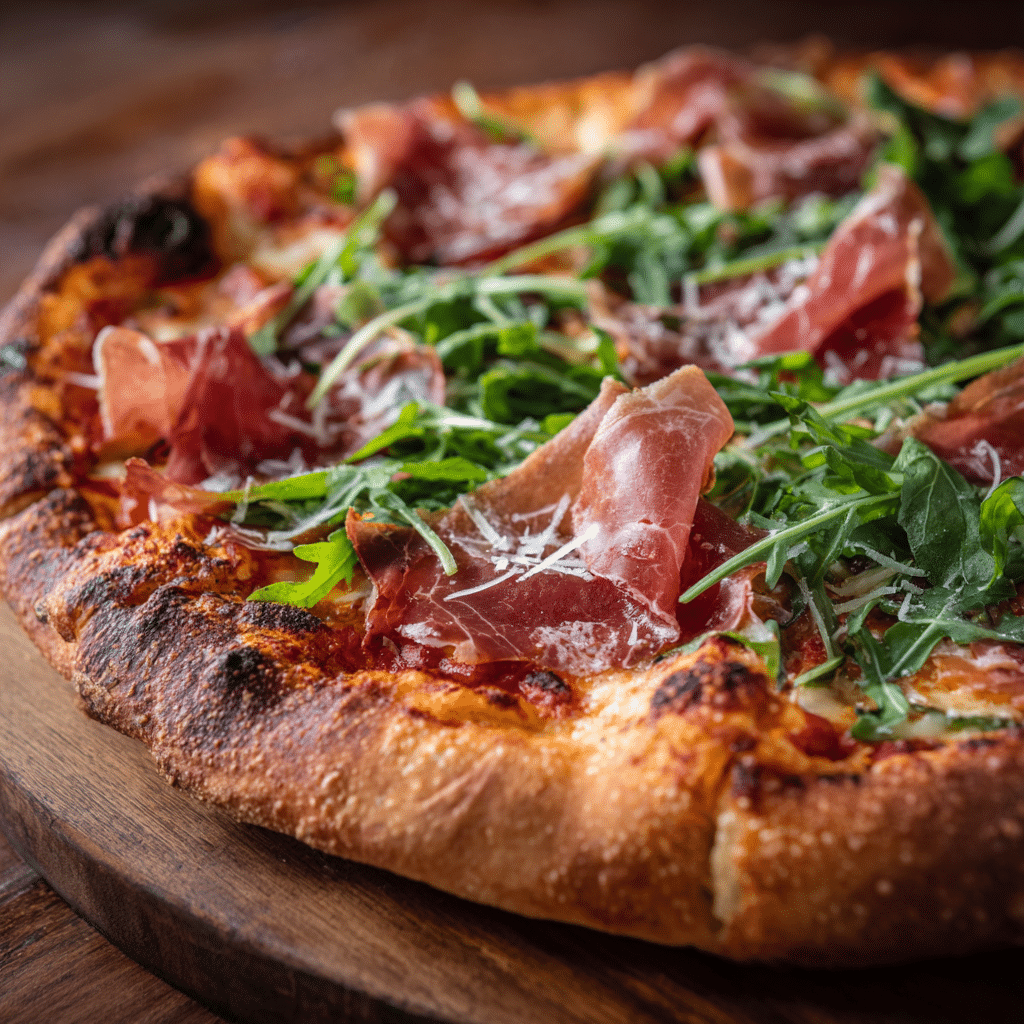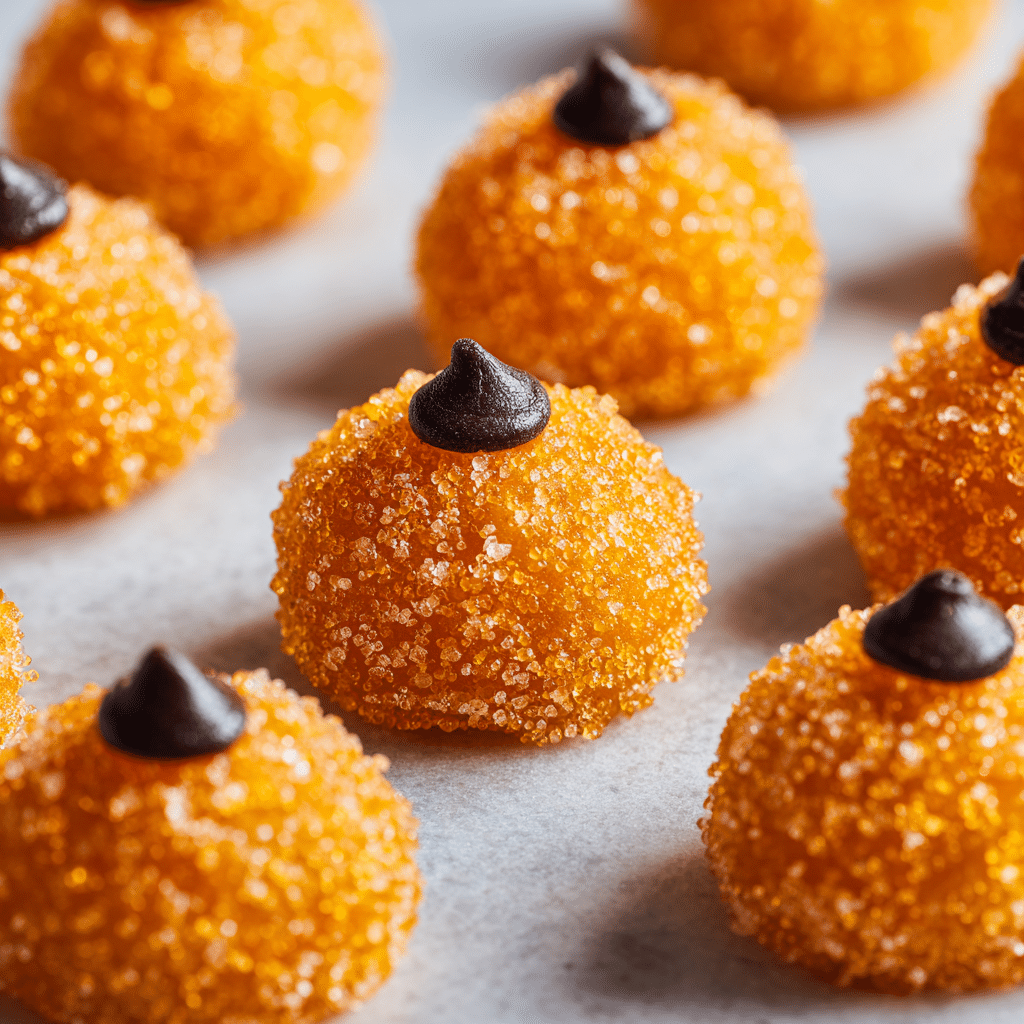There’s nothing quite like the bite of homemade artisan pizza dough—crispy on the outside, chewy in the center, and full of those signature airy bubbles that rival your favorite wood-fired pizzeria. This dough recipe creates a beautiful balance of texture and flavor through slow fermentation, high hydration, and simple, quality ingredients.
Whether you’re baking in a home oven, on a pizza stone, or using a backyard pizza oven, this dough delivers restaurant-style results that are versatile enough for Neapolitan-style pies, thin-crust pizzas, or blistered pan bakes. It’s naturally vegan, made with just flour, water, yeast, and salt, and perfect for those who appreciate good dough as the foundation of great pizza.
Ingredients Overview
Here’s a breakdown of the essential ingredients that give artisan pizza dough its signature crispy-chewy character and pillowy crust.
1. Flour
The choice of flour is crucial. Use bread flour for the best structure and chew, thanks to its high protein content (12–13%). You can also blend in 00 flour (extra fine Italian flour) for an even silkier finish.
-
Optional blend: 75% bread flour + 25% 00 flour
2. Water
Hydration is key for a bubbly, open crumb. This dough uses 70–75% hydration, meaning 70–75 grams of water per 100 grams of flour. Higher hydration makes a wetter dough, which results in a more open, airy structure.
Use room-temperature filtered water for best results.
3. Yeast
Instant or active dry yeast works. A small amount goes a long way in long-fermented dough. ¼ teaspoon is all you need for an overnight cold ferment.
4. Salt
Essential for flavor and strengthening the gluten. Use fine sea salt or kosher salt—about 2–2.5% of the flour weight.
5. Olive Oil (optional)
While not traditional in Neapolitan-style doughs, a small amount of oil can add elasticity and enhance browning, especially if baking in a standard oven.
Step-by-Step Instructions
This recipe follows a slow fermentation method—giving the dough time to develop deep flavor, better structure, and the iconic crust texture artisan pizza is known for.
Dough Formula (for 2 x 12-inch pizzas):
-
400g bread flour (or a mix with 00 flour)
-
280–300g water (70–75% hydration)
-
10g fine salt
-
1g (¼ tsp) instant yeast
-
1 tsp olive oil (optional)
1. Mix the Dough (Day 1)
In a large bowl:
-
Combine flour and yeast.
-
Add most of the water and mix until shaggy.
-
Add salt and remaining water (plus oil, if using).
-
Mix until no dry bits remain.
Let rest 20 minutes (autolyse), then stretch and fold the dough in the bowl for 2–3 minutes until slightly elastic.
2. Bulk Ferment
Cover and let the dough rest at room temperature for 1 hour. Perform 2 stretch-and-folds every 30 minutes to strengthen the gluten.
Then cover tightly and transfer to the fridge for 12–72 hours.
3. Divide and Shape (Day 2 or 3)
Remove dough from fridge and let sit at room temperature for 1 hour.
-
Turn out onto a floured surface and divide into 2 equal portions.
-
Gently shape each into a tight ball by folding the sides under.
-
Place in an oiled tray or container, cover, and let rest for another 2 hours at room temp.
4. Stretch and Top
Preheat oven with a pizza steel or stone at 500–550°F (260–285°C) for at least 45 minutes.
-
Flour your hands and work surface with semolina or bread flour.
-
Gently stretch the dough by pressing from the center outward and lifting to let gravity assist.
-
Avoid using a rolling pin—it pushes out the bubbles.
Add sauce, cheese, and toppings right before baking.
5. Bake
-
Transfer the dough to a preheated pizza steel or stone.
-
Bake for 6–8 minutes, or until the crust is blistered, browned, and the cheese is bubbling.
If using a pizza oven (800–900°F), reduce bake time to 90–120 seconds.
Tips, Variations, and Substitutions
Pro Tips
-
Cold ferment for at least 24 hours for best flavor and texture.
-
High hydration = open crumb, but stickier dough. Use wet hands when handling.
-
Don’t overload toppings—they weigh down the dough and prevent bubbling.
Variations
-
Garlic Herb Crust: Add minced garlic and dried herbs to the dough during mixing.
-
Sourdough Version: Replace yeast with 100g active sourdough starter and reduce water slightly.
-
Whole Wheat: Replace up to 25% of the flour with whole wheat for a nuttier flavor.
Substitutions
-
00 Flour Only: You can use 100% 00 flour for a softer crust, but it’s better suited to very high-heat ovens.
-
Active Dry Yeast: Use the same quantity, but activate it in a bit of warm water first.
Serving Ideas & Occasions
This artisan pizza dough is the perfect base for every pizza style—from classic Margherita to bold, loaded creations.
Pizza Styles:
-
Neapolitan: Light sauce, mozzarella, basil
-
New York-style: Larger pies with thin slices and crisp edges
-
White Pizza: Olive oil, garlic, ricotta, and arugula
-
Seasonal: Butternut squash, sage, goat cheese
When to Use:
-
Pizza Nights: Prep dough in advance and let guests top their own
-
Special Occasions: Bake in a backyard oven or on a grill stone
-
Meal Prep: Make dough balls and freeze for later use (see FAQ)
Nutritional & Health Notes
While pizza isn’t traditionally considered “healthy,” making your own artisan dough gives you control over every ingredient.
-
No preservatives or additives
-
Simple, clean ingredients
-
Can be made whole-grain or gluten-free
-
Low sugar: This dough contains no sugar—flavor develops naturally through fermentation.
Per 12-inch pizza dough ball (approximate):
-
300–350 calories
-
10–12g protein
-
<2g fat
-
60–65g carbs
Varies based on flour type and hydration.
FAQ
1. How long should I ferment artisan pizza dough?
For best flavor and texture, ferment in the fridge for 24–72 hours. The longer the ferment, the better the taste and airiness.
2. Can I freeze pizza dough?
Yes. After shaping into balls, wrap tightly in plastic and freeze for up to 3 months. Thaw overnight in the fridge and allow to come to room temperature before using.
3. Why is my dough tearing when I stretch it?
It may be under-fermented or not rested enough. Let it warm up and rest for 30 minutes, then try again gently.
4. How do I get more bubbles in the crust?
Use high hydration, minimal handling, and avoid pressing out all the gas during shaping.
5. What’s the best flour for bubbly crust?
Bread flour or a blend of bread flour and 00 flour. High protein strengthens gluten to trap air bubbles.
6. Do I need a pizza stone or steel?
Not strictly, but they help recreate pizzeria-style bottoms. A cast-iron skillet or upside-down baking sheet can work in a pinch.
7. Can I make this dough same-day?
Yes, use 2 tsp yeast and let rise for 1–2 hours at room temp. It works, but won’t have the same deep flavor or structure as cold-fermented dough.
Print
Artisan Pizza Dough: Crispy, Chewy & Perfectly Bubbly Crust
- Total Time: ~24 hours
- Yield: 2 x 12-inch pizzas
Description
This artisan pizza dough bakes up crispy, chewy, and bubbly with deep fermented flavor. Perfect for Neapolitan or thin-crust pizza, with a high hydration and slow rise for the ultimate homemade pizza experience.
Ingredients
-
400g bread flour (or 300g bread + 100g 00 flour)
-
280–300g water (70–75% hydration)
-
10g salt
-
1g (¼ tsp) instant yeast
-
1 tsp olive oil (optional)
Instructions
-
Mix flour and yeast. Add water, salt, and oil (if using). Mix until shaggy.
-
Let rest 20 minutes. Stretch and fold for 2–3 minutes.
-
Cover and rest 1 hour at room temp, folding twice.
-
Refrigerate for 12–72 hours.
-
Divide and shape into 2 balls. Rest 2 hours at room temp.
-
Stretch by hand and top.
-
Bake at 500–550°F on stone/steel for 6–8 minutes until bubbly and browned.
Notes
-
For same-day dough: use 2 tsp yeast and let rise 2 hours.
-
Use bread flour for chew; 00 flour for tenderness.
-
Freeze dough balls up to 3 months
- Prep Time: 20 minutes
- Cook Time: 7 minutes




